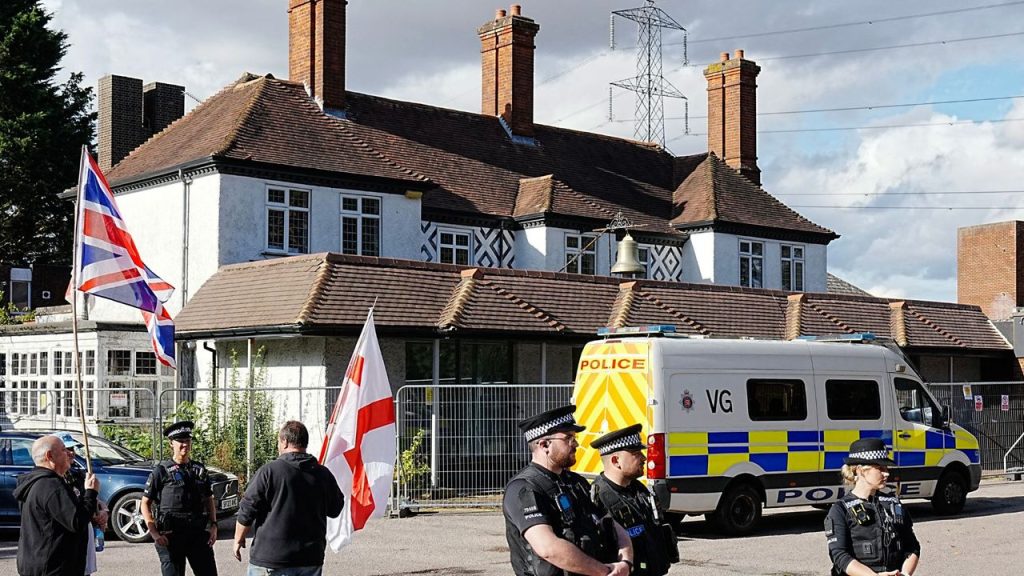Hotels housing asylum seekers became a lightning rod this summer for political and community tensions over illegal migration, and over the dramatic increase in the number of migrants arriving in Britain on small boats. Large numbers of people are still being housed in these hotels, though the government has promised to end the practice by the end of this parliament, in 2029. As of June 2025, 32,059 asylum seekers were being accommodated in hotels. That’s 8% up on last year’s level (though actually down from a peak of 56,042 in September 2023).
One council, Epping Forest, has argued in court – unsuccessfully – that using hotels in this way is a breach of planning laws. The government has also been criticised by the Home Affairs Committee of MPs for its general failures in its management of asylum accommodation, and for squandering billions on hotels.
What is the context to all this?
The number of asylum seekers coming to the UK has risen sharply in recent years, because of small-boat crossings. In the year ending December 2024, a record 108,138 people claimed asylum (84,231 main applicants plus 23,907 dependants). The figure for 2019 was 44,494. When asylum seekers have been processed, if they are judged to be “destitute”, as most are, they are eligible for accommodation and subsistence while their claims are being assessed (most are not allowed to work).
New arrivals are placed in “initial accommodation”. Then they are moved to longer‑term “dispersal accommodation” – flats or houses of multiple occupation, often in areas such as the North West, where housing is cheaper – until an asylum decision has been made. But when this is not available, “contingency accommodation” is used: usually hotels. All this accommodation is provided by private contractors: in 2019, the Home Office gave ten-year contracts to three companies: Serco, Clearsprings Ready Homes and Mears.
Why are hotels being used so much?
Until 2020, they were used only in very limited circumstances. But when the pandemic struck, the contractors began placing asylum seekers in hotels – partly for public health reasons, and partly because empty hotels were a useful place to house growing numbers of people. This was only ever intended as a temporary measure, as a response to the pressures of the pandemic. However, it soon became a major part of the asylum accommodation system: at one point, 400 hotels were being used.
After the pandemic, demand continued to grow – because of rising numbers, and because of Boris Johnson’s decision to stop processing asylum claims as his government pursued its Rwanda policy, meaning that more people were stuck in the system. Around a third of the total are now housed in hotels.
Why is it seen as a problem?
Firstly, asylum hotels are poor value for money. The average daily cost of housing an asylum seeker is about £145 per person – compared with £23 in “dispersal accommodation”; catering, laundry, onsite security and so on raise costs. As a result, the expected cost of those three ten-year contracts has risen from £4.5 billion to £15.3 billion, according to the Home Affairs Committee.
Hotels are also unsuitable for asylum seekers themselves: some spend years living in hotels. Bored and unable to work legally, asylum seekers have little to do but stay in their rooms or loiter in the local area; some have committed crimes. Residents living near these hotels often complain that they feel unsafe; The Bell Hotel in Epping, along with others, have become flashpoints for protests and violence.
Are there any alternatives?
There are few easy solutions. From August 2023, some 500 male asylum seekers were moved to the Bibby Stockholm barge docked off the Dorset coast; but that prompted protests and legal challenges, and within 16 months it had been emptied. At present, two large former Ministry of Defence sites are being used to house them: Napier Barracks near Folkestone – found by the High Court in 2021 to be “filthy” and overcrowded – and a former RAF base at Wethersfield in Essex. Napier is due to close by December.
Another option, proposed by the Refugee Council, would be for ministers to grant time-limited leave to remain in Britain to all asylum seekers from five countries (Syria, Eritrea, Sudan, Iran and Afghanistan) whose claims are almost certain to be successful, which would allow asylum hotels to be closed within six months.
What’s the government doing?
It wants to tackle the problem by reducing the number of people in the asylum system: speeding up the processing of claims; reducing irregular arrivals by cracking down on criminal gangs; stepping up returns of those who have been rejected; and perhaps tightening up the rules in general. Keir Starmer has said that he wants asylum hotels “emptied as quickly as possible”. Labour wants to open asylum camps on disused Army bases and on government land, including barracks in East Sussex and Inverness. It’s also trialling a plan to give asylum seekers £100 per week so they can live with family or friends.
Will the hotels be closed?
The PM has told ministers that he hopes to be able to end the use of hotels next year. By then, the government aims to have readied military sites, and made progress in cutting the asylum backlog (which Labour says has fallen by around 20% since it took office). Still, plans to house asylum seekers on government land are likely to encounter local opposition and legal challenges. It’s likely to be expensive, too: such sites often cost more even than hotels. The Home Office’s record does not inspire confidence: the Home Affairs Committee described it as “chaotic”. It had failed, for instance, to claw back millions in “excess profits” owed by contractors to the public purse until prompted by the Committee.
Using hotels to house asylum seekers has proved extremely unpopular. Why, and what can the government do about it?
